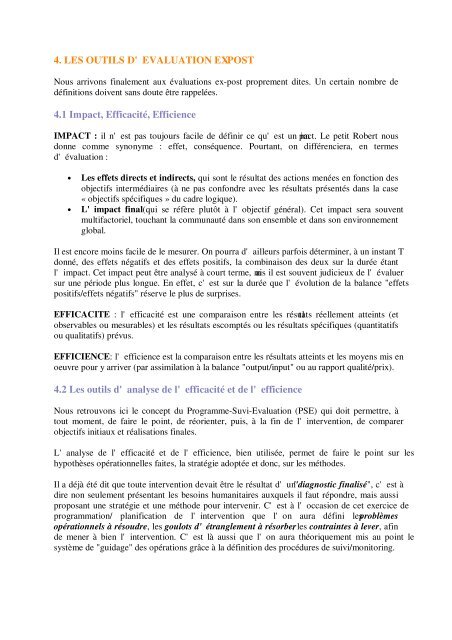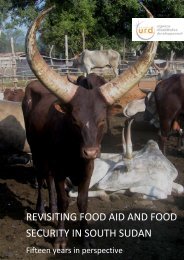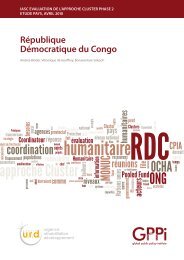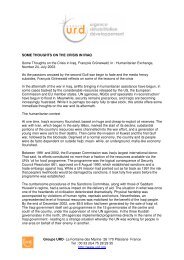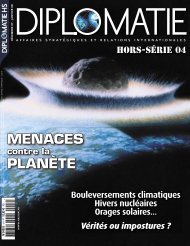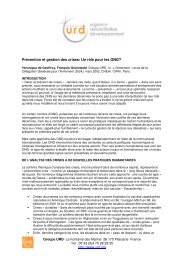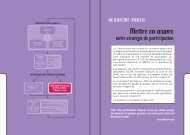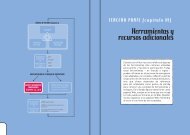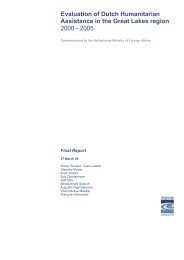You also want an ePaper? Increase the reach of your titles
YUMPU automatically turns print PDFs into web optimized ePapers that Google loves.
24light back to its source:“things look at me and yet I see them,” Lacansays. These looks are exchanged through the screen that filters visionthrough the mediations of cultural conventions and codes that makethe seen visible.The gaze is mediated by the screen, contested and interruptedby the look.Vision is multiple and power is shared. I believethat we can use photographs to study these complex visual relations.Interpellated by the photograph, its viewers become part of the networkof looks exchanged within the image and beyond it.The viewerboth participates in and observes the photograph’s inscription in thegazes and the looks that structure it.But is this multiplicity of vision sustained in the images of totaldeath that have survived the destruction of the Holocaust, like the imageof the bodies in the mass grave? In the images of burial and execution,the bulldozer burying the innumerable bodies repeats the actof the gun that has shot those bodies before they are buried, or the gasthat has choked them. And the camera recording this violent destructionfor posterity cannot stand ouside this complication. In its staggeringmultiplication, the triple act of shooting overwhelms all viewingrelations. 31Several images that have been frequently reproduced in recent exhibitsmake this troubling equation uncompromisingly clear.These reversethe temporal sequence of the mass grave picture. They are imagesfrom the mass executions in Russia, Latvia, and Lithuania thatdepict victims facing the camera moments before they are to be putto death. I am thinking in particular of an image of four women, intheir undergarments. In the brutally frontal image, the camera is in theexact same position as the gun and the photographer in the place ofthe executioner who remains unseen. The victims are already undressed;the graves have been dug. Displayed in their full vulnerabilityand humiliation they are doubly exposed in their nakedness and theirpowerlessness. They are shot before they are shot. 32How are postmemorial viewers to look at this picture and otherslike it? Where are the lines of transgenerational identification and empathy?Unbearably, the viewer is positioned in the place identical withthe weapon of destruction: our look, like the photographer’s, is in theplace of the executioner. Steven Spielberg makes that utterly plainwhen he photographs Amon Goeth’s random executions through theviewfinder of his gun in Schindler’s List. Is it possible to escape thetouch of death and the implication in murder that these images perform?To regain a form of witnessing that is not so radically tainted?Perhaps the most haunting, arresting moment in Ida Fink’s “Traces”is the witness’s question, “I wonder who photographed it?” Fink’sstory reminds us that every image also represents, more or less visiblyor readably, the context of its production and a very specific embodiedgaze of a photographer. And, she reminds us as well, that for photheyale journal of criticism


